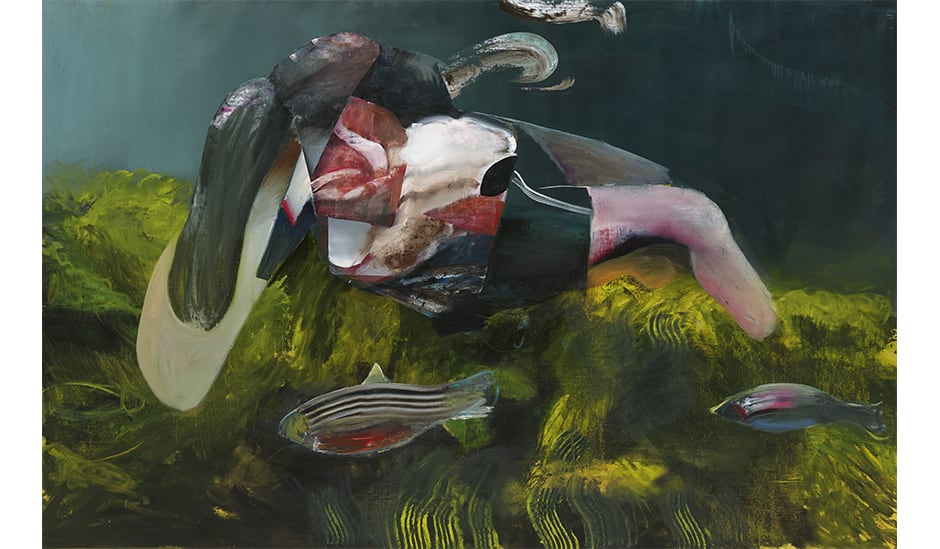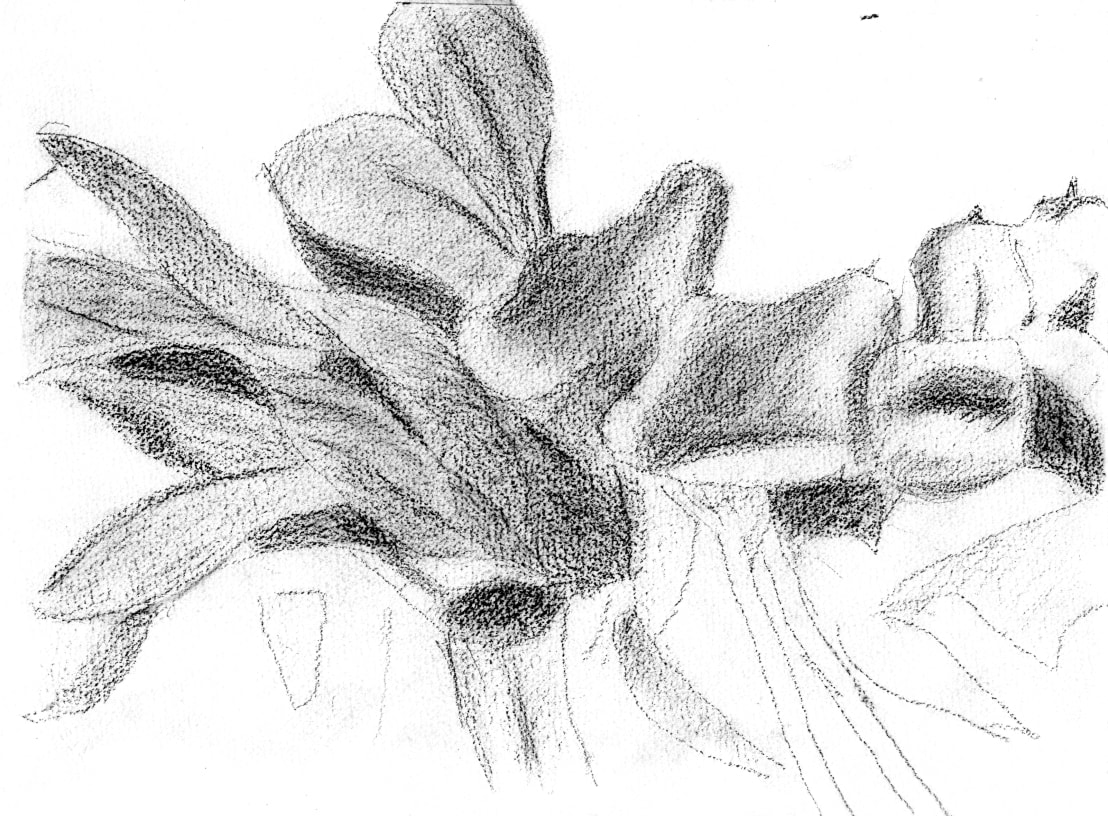Adrian Ghenie The Battle Between Carnival And Feast
An exhibition of new works at Palazzo Cini Gallery to coincide with the 58th Venice Biennale
Palazzo Cini Gallery will present an exhibition of new works by Adrian Ghenie titled The Battle Between Carnival and Feast. Unveiled on the second floor of the historic museum on 19 April 2019, the exhibition will be on view during the 58th edition of the Venice Biennale until 18 November 2019. Palazzo Cini Gallery, part of the Fondazione Giorgio Cini, is the exceptional museum house that was once Vittorio Cini’s home. It now contains the masterpieces from his personal collection, and since the reopening in 2014 Assicurazioni Generali has been the gallery's main partner. The Battle Between Carnival and Feast is presented in dialogue with the rooms of the museum and will run until 18 November.
One of the most celebrated painters of his generation, Adrian Ghenie combines in his works personal memories and collective trauma, both past and present. His paintings engage not only with the history of painting, but with “painting the texture of history” and the personalities whose actions have defined its course. Investigating the possibilities of paint as a medium is always central to Ghenie’s practice and by fusing the grand themes and narratives of historical painting with figures from today and current affairs, the paintings become less about the subject and more about the act of painting itself.
The Battle Between Carnival and Feast presents recent paintings, a number painted specifically for this exhibition. On one hand they reflect the rich maritime history of the city with its many waterways, and on the other the conflict and turmoil caused by today’s geo-political issues. The theme of water unites these works, which are painted in an aqueous palette of deep-sea greens, vivid blues and shimmering greys.
“Painting is still an extremely vital force, able to express the great complexity of our time, and in Ghenie’s work it is the medium for a powerful synthesis of contemporaneity, history, beauty and the grotesque,” comments Luca Massimo Barbero, Director of the Fondazione Cini Institute of Art History.
The largest painting in the group is a vast ‘Neo-Baroque’ composition that reveals a floating life raft surmounted by a mass of vulnerable, naked legs and feet, set against a tumultuous sea and sky. The painting is reminiscent of the harrowing images we see in today’s news, showing the perilous journeys that refugees are forced to make to flee conflict. It can also be viewed as a contemporary analogue to The Raft of the Medusa (1818–19) by the French Romantic painter Théodore Géricault, which depicts the survivors of the wrecked naval frigate Méduse clinging to a raft after their ship ran aground in 1816.
Another large horizontal painting, the most cinematic in the group, initially resembles a huge aquarium but upon closer inspection reveals a partially decomposed body floating above tropical fish and vivid seaweed. Figure with Dog is dominated by an enormous partially clothed figure, standing near a petrified squatting dog and set against a Rousseau-esque landscape. Half woman, half monster, the figure’s enormous twisted mass of flesh and hair simultaneously seduces and repulses the viewer.
Three portraits, smaller in scale, illustrate the artist’s interest in deconstructing the genre of portraiture. In these works, he approaches the face as a landscape, its features obliterated by a textural smudge that hints at the underlying anatomy without depicting it. At the heart of Ghenie’s portraiture is his fascination with the uniquely human ability to anthropomorphise abstract signs and symbols, mentally filling in the blanks so that not only do we read a faceless figure as a portrait, but the subject is recognisable.
Above all, these works are united by Ghenie’s emotive handling of paint, which he scrapes and manipulates on the canvas to create a pictorial palimpsest superimposing the controversial themes of history, politics, ideology and mass media, where meaning always remains unfixed.
In 2015, Ghenie’s presentation for the Romanian Pavilion at the 56th edition of the Venice Biennale Darwin’s Room cast light on his complex and multi-layered painterly universe. His exploration of the notion of survival drew upon theories of biological evolutionism and the ways in which they have been consciously misinterpreted to transform societies. Lóránd Hegyi wrote in the catalogue: “The paintings of Adrian Ghenie present themselves as a gigantic theatre, an unusually deep, semi dark, quite inscrutable, and extremely densely arranged stage, enlivened with impressive light effects … His painting is sensuous, immediate, lively, suggestive, and dynamic, despite being simultaneously very structured and balanced.”
The bilingual (Italian and English) catalogue for The Battle between Carnival and Feast includes an introductory conversation between the director of the Institute of Art History, Luca Massimo Barbero, and the artist.
The exhibition is presented with the support of Galerie Thaddaeus Ropac. London • Paris • Salzburg
Adrian Ghenie was born in 1977 in Baia Mare, Romania. He currently lives and works in Berlin, after having graduated from the University of Art and Design in Cluj, Romania. In 2015, Ghenie represented the Romanian Pavilion at the 56th edition of the Venice Biennale and he has had major exhibitions worldwide. His installation The Darwin Room of 2013–14 is currently on view at Centre Pompidou, Paris until December 2020, the second of his installations presented as a ‘room within a room’. The first, The Dada Room, 2010, is now in the permanent collection of S.M.A.K. Ghent. His previous solo exhibitions include the Villa de Medici, Rome; CAC Málaga; Museum of Contemporary Art, Denver; Stedelijk Museum voor Actuele Kunst (S.M.A.K.), Ghent, and National Museum of Contemporary Art Bucharest. He has also participated in exhibitions at the Palazzo Grassi and François Pinault Foundation, Venice; Fondation Van Gogh, Arles; Tate Liverpool; Prague Biennial; San Francisco Museum of Modern Art; Fondazione Palazzo Strozzi, Florence; Centre Pompidou, Paris, among others.
For more information please contact [email protected]
Palazzo Cini
Campo San Vio, Dorsoduro 864, Venice
11 am-7 pm (ticket office closes at 6:15 pm)
closed on Tuesdays
















































































































































































